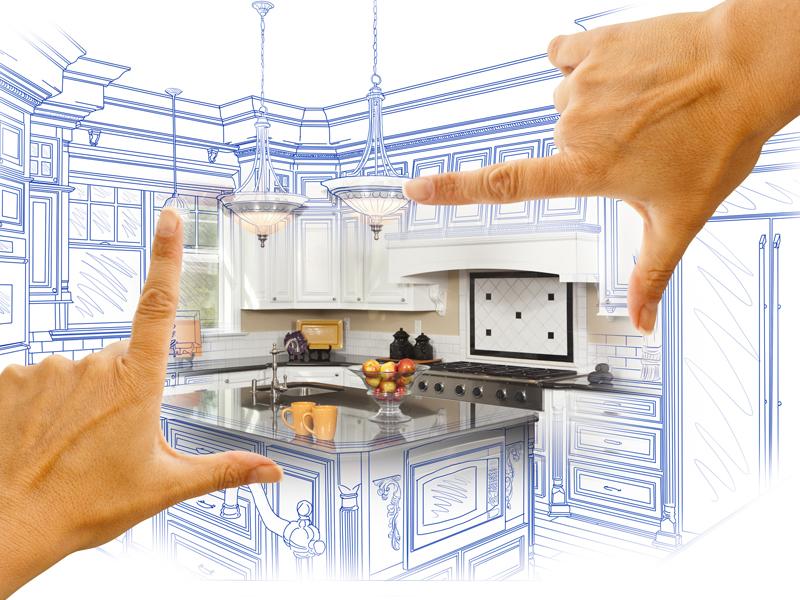As homeowners continue to invest in transforming their living spaces, the question of return on investment (ROI) remains at the forefront of renovation conversations. In 2025, a fresh wave of major home improvements has not only reshaped interiors but also influenced property values and personal satisfaction in unexpected ways. This article delves into the latest reports from homeowners nationwide, exploring how substantial renovations-from kitchen overhauls to complete additions-are paying off, both financially and emotionally, in today’s evolving real estate landscape.
Table of Contents
- Homeowners Reveal Which Renovations Deliver the Best Financial Returns
- Unpacking the Data Behind Renovation ROI in 2025
- Key Factors That Influence the Profitability of Home Upgrades
- Strategic Renovation Tips to Maximize Your Investment
- Balancing Aesthetics and Value in Home Improvement Projects
- Frequently Asked Questions
- Insights and Conclusions
Homeowners Reveal Which Renovations Deliver the Best Financial Returns
When homeowners take on renovation projects, the goal often extends beyond mere aesthetics or comfort-financial returns are a crucial consideration. In recent surveys, several key projects have consistently emerged as front-runners in delivering strong return on investment (ROI) in 2025.
Kitchen remodels continue to top the list, with many reporting returns of up to 75%. Upgrading appliances, installing energy-efficient lighting, and adding modern cabinetry not only enhance daily living but also significantly boost a property’s market appeal. Similarly, bathroom renovations, especially those involving new fixtures and improved layouts, yield impressive returns often exceeding 70%.
Outdoor enhancements are gaining traction as well. Homeowners who invest in landscaping, deck additions, or patio upgrades note a rising interest from buyers, with returns averaging around 60%. These projects enhance curb appeal and expand living space, creating a seamless indoor-outdoor flow that’s highly desirable.
| Renovation Type | Average ROI | Key Benefits |
|---|---|---|
| Kitchen Remodel | 70-75% | Modern appliances, energy efficiency |
| Bathroom Upgrade | 65-70% | New fixtures, optimized layout |
| Outdoor Landscaping | 55-60% | Enhanced curb appeal, added space |
| Basement Finishing | 50-55% | Extra usable living area |
Ultimately, the most profitable renovations blend style, functionality, and energy efficiency. Homeowners prioritizing these elements find their investments not only increase home value but also make their properties more competitive in a crowded market.

Unpacking the Data Behind Renovation ROI in 2025
As homeowners across the country embark on ambitious renovation projects in 2025, the spotlight is firmly on the financial returns these upgrades yield. Recent surveys reveal that the average ROI for major home improvements is not only holding steady but, in some cases, surpassing expectations. This trend highlights a growing confidence in strategic home investments amid fluctuating market conditions. Key factors such as location, project scale, and material choices heavily influence the eventual payback.
Analyzing the numbers, kitchens and bathrooms continue to dominate as the most lucrative spaces for upgrades. Smart technology integrations and eco-friendly materials are increasingly driving value, with many homeowners reporting enhanced appeal to buyers and improved energy efficiency. Meanwhile, exterior enhancements like landscaping and siding have shown steady returns, reflecting a desire for curb appeal that stands out in competitive markets.
Consider the following breakdown of average ROI percentages reported by homeowners in 2025:
| Renovation Type | Average ROI | Key Benefit |
|---|---|---|
| Kitchen Remodel | 72% | Modern aesthetics & functionality |
| Bathroom Upgrade | 65% | Improved comfort & resale appeal |
| Energy-Efficient Windows | 55% | Lower utility bills & eco-friendly |
| Exterior Landscaping | 50% | Enhanced curb appeal |
Homeowners are also emphasizing value-driven decisions by focusing on renovations that balance cost with long-term benefits. Simple yet impactful improvements such as fresh paint, upgraded lighting, and smart home installations frequently top the list for delivering tangible ROI without breaking the bank.
- Prioritize projects with proven market demand
- Opt for sustainable and durable materials
- Leverage technology to boost home efficiency
- Consult local market trends before investing

Key Factors That Influence the Profitability of Home Upgrades
When evaluating the financial benefits of home improvements, several critical elements come into play. Location remains a top influencer-upgrades in high-demand neighborhoods tend to yield higher returns compared to similar projects elsewhere. Additionally, the current real estate market conditions can sway profitability; a seller’s market often amplifies the ROI, while a buyer’s market may temper expectations.
The scope and quality of the renovation also dramatically impact profitability. Projects that enhance curb appeal or modernize essential systems (like kitchens, bathrooms, and HVAC) generally attract more buyers and justify higher price tags. Conversely, overly personalized or luxury-focused upgrades may not always translate into proportional financial gains, highlighting the importance of balancing style with broad market appeal.
Another often overlooked factor is timing. Homeowners who complete renovations well before listing their property benefit from increased market value and a smoother selling process. Immediate resale after a major upgrade might not capture the full value, especially if the work hasn’t been thoroughly tested or appreciated by the market.
- Neighborhood desirability – Proximity to amenities and schools
- Quality of craftsmanship – Durable materials and expert finishes
- Market trends – Demand for specific styles or features
- Project scale – Balanced upgrades vs. over-improvement
| Factor | Impact on ROI | Example |
|---|---|---|
| Location | High | Urban vs. Suburban |
| Upgrade Type | Medium to High | Kitchen remodel |
| Timing | Medium | 6 months before sale |
| Market Trends | Variable | Modern vs. Classic styles |
Strategic Renovation Tips to Maximize Your Investment
When planning a renovation, it’s essential to focus on improvements that not only enhance your living space but also significantly boost your home’s market value. Prioritize projects that offer the highest return on investment, such as kitchen upgrades, bathroom remodels, and energy-efficient enhancements. These areas consistently attract buyers and provide lasting appeal.
Balancing style with functionality is key. Opt for timeless design choices that appeal to a broad audience, avoiding overly personalized aesthetics that could limit future resale potential. Incorporate durable materials and smart home technologies that increase convenience and reduce long-term costs, making your property more attractive in a competitive market.
Budget management plays a critical role in maximizing ROI. Allocate funds strategically by focusing on high-impact areas and avoiding unnecessary extravagance. Here’s a quick overview of renovation priorities by ROI potential:
| Renovation Type | Average ROI | Key Benefit |
|---|---|---|
| Kitchen Remodel | 75% | Modern appeal & functionality |
| Bathroom Upgrade | 70% | Enhanced comfort & aesthetics |
| Energy Efficient Windows | 65% | Lower utility bills & eco-friendly |
| Exterior Improvements | 60% | Curb appeal & structural protection |
Pro tip: Collaborate with experienced contractors and real estate professionals to tailor renovations specifically for your local market. Their insights can help you avoid costly mistakes and focus on enhancements that genuinely add value.
- Research neighborhood trends before investing.
- Invest in sustainable and energy-saving upgrades.
- Keep improvements consistent with the home’s architectural style.
- Plan for future maintenance to protect your investment.

Balancing Aesthetics and Value in Home Improvement Projects
When embarking on home improvement projects, homeowners often face the challenge of striking the perfect balance between visual appeal and long-term financial benefits. While a stunning kitchen remodel or a chic bathroom upgrade can dramatically elevate the atmosphere of a home, it’s equally important to consider how these changes impact the property’s resale value. Achieving this harmony means selecting design elements that not only catch the eye but also resonate with potential buyers and appraisers.
Key strategies to balance aesthetics and value include:
- Choosing timeless color palettes and finishes over trendy, short-lived styles.
- Investing in quality materials that are durable yet visually appealing.
- Optimizing functional layouts that improve the flow and usability of spaces.
- Incorporating energy-efficient upgrades that add modern value without compromising design.
Data from recent projects highlights that properties with renovations focused on both style and substance tend to recoup a higher percentage of their investment. For example, kitchen remodels that blend classic cabinetry with smart storage solutions often yield better ROI than purely extravagant designs. Similarly, outdoor improvements that enhance curb appeal while providing practical living space see stronger market appreciation.
| Renovation Type | Average ROI (%) | Top Aesthetic Features | Value Drivers |
|---|---|---|---|
| Kitchen Remodel | 75% | Quartz countertops, neutral tones | Improved layout, durable appliances |
| Bathroom Upgrade | 65% | Walk-in showers, modern fixtures | Increased functionality, water efficiency |
| Exterior Enhancement | 70% | Landscaping, fresh siding | Boosted curb appeal, weather resistance |
Ultimately, the most successful renovations are those that thoughtfully integrate both form and function. By considering the tastes of future buyers alongside personal style preferences, homeowners can create spaces that are not only beautiful but also wise investments for years to come.
Frequently Asked Questions
Q&A: Homeowners Report ROI on Major Renovations in 2025
Q: What are the top major renovations homeowners undertook in 2025?
A: In 2025, homeowners primarily focused on kitchen remodels, bathroom upgrades, and energy-efficient enhancements such as solar panel installations and smart home systems. Outdoor living spaces like decks and patios also saw a surge in popularity.
Q: Which renovation projects yielded the highest return on investment (ROI) this year?
A: Kitchen remodels consistently topped ROI charts, with homeowners recouping approximately 70-75% of their investment. Energy-efficient upgrades followed closely, thanks to rising utility costs and increased environmental awareness. Bathroom renovations also delivered solid returns, averaging around 65%.
Q: Did location impact renovation ROI in 2025?
A: Absolutely. Urban homeowners reported higher ROI on high-end renovations, while suburban and rural areas saw better returns on functional improvements like insulation and energy-saving technologies. Market demand and regional real estate trends played significant roles.
Q: How did sustainability influence renovation choices and ROI?
A: Sustainability was a key driver in 2025 renovations. Eco-friendly materials, solar panels, and energy-efficient appliances not only appealed to environmentally conscious homeowners but also boosted property values, enhancing overall ROI.
Q: Are there any renovation projects that didn’t pay off as expected?
A: Lavish additions such as home theaters or extravagant pools often fell short of expected ROI, particularly in markets where such features weren’t in high demand. Over-customization sometimes limited buyer appeal.
Q: What advice do experts give homeowners planning major renovations for the best ROI?
A: Experts recommend focusing on universally appealing improvements-think modern kitchens, updated bathrooms, and energy efficiency. It’s important to balance personal taste with market trends, ensuring upgrades enhance both enjoyment and resale value.
Q: How has technology influenced renovation ROI in 2025?
A: Smart home technology has become a major factor, with integrated security systems, automated lighting, and climate control adding convenience and appeal. These features often increase a home’s marketability and ROI.
Q: Will the trends from 2025 likely continue into the future?
A: Many of the 2025 trends, especially those related to sustainability and smart technology, are expected to grow as homeowners prioritize long-term savings and modern living. However, market fluctuations and regional preferences will always influence ROI outcomes.
Q: Where can homeowners find reliable data on renovation ROI?
A: Trusted sources include real estate market analyses, home improvement industry reports, and local appraisal experts. Consulting multiple resources can help homeowners make informed decisions tailored to their specific markets.
Insights and Conclusions
As homeowners look back on their renovation journeys in 2025, the numbers tell a story of thoughtful investments and evolving priorities. Major renovations continue to reshape living spaces, not just in style but in value, reflecting a balanced blend of personal comfort and financial wisdom. Whether driven by necessity or aspiration, these improvements underscore a timeless truth: a home is more than bricks and mortar-it is an ever-changing canvas where dreams and returns coexist. As the landscape of homeownership advances, the insights from this year’s ROI reports will serve as a guiding light for those ready to embark on their next transformative project.
